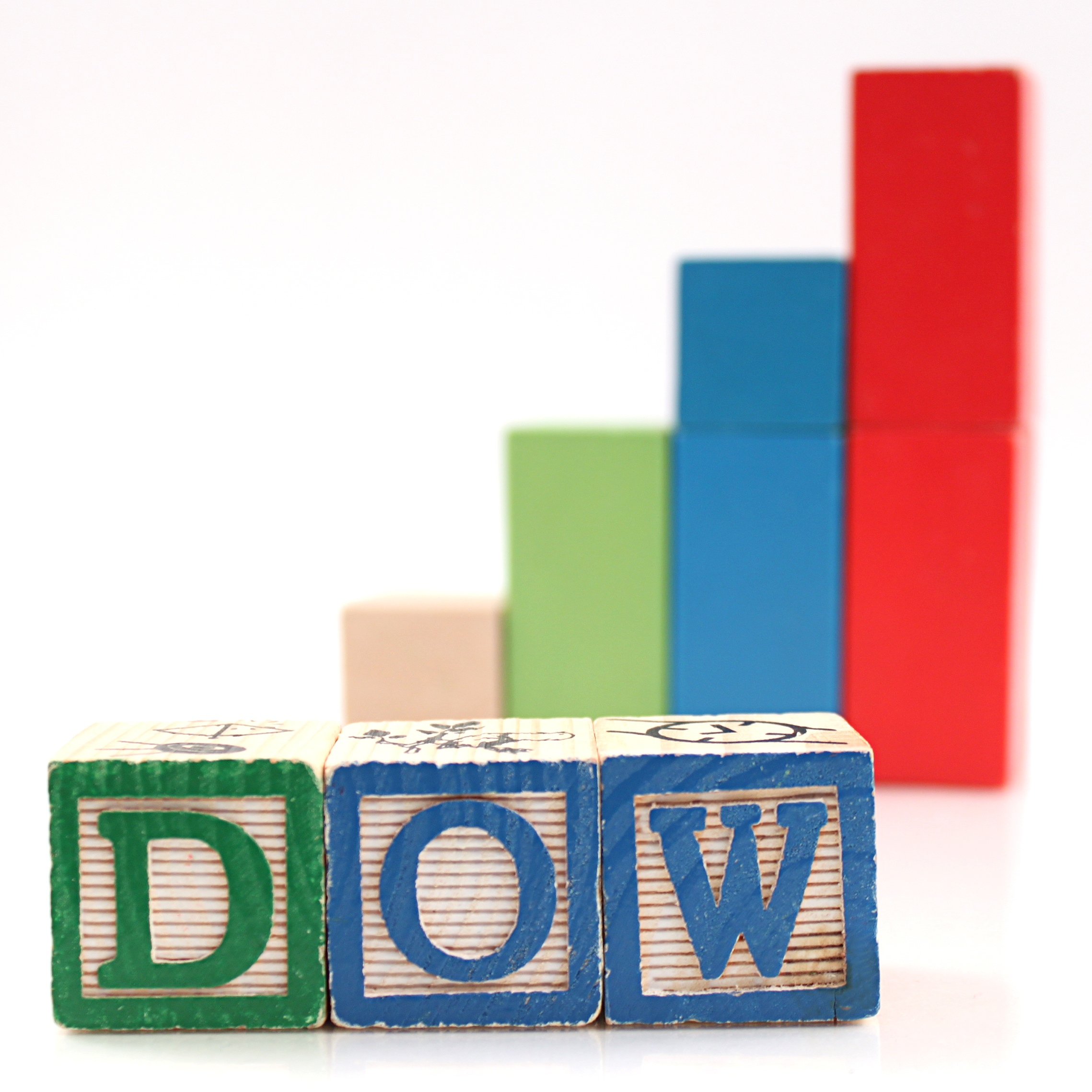
With a Federal Reserve rate hike decision, investors have to keep in mind what to think of the stock market heading into the rest of this summer and what to expect for the rest of 2017. Last Friday acted as a reminder that some of the market’s most popular stocks could face a serious bruising on no real news at all. The bad news is that those market darlings are mostly in the S&P 500 Index and in the Nasdaq 100. The good news is that most of them are not members of the Dow Jones Industrial Average (DJIA).
When 24/7 Wall Street gave its 2017 Bull-Bear Outlook, we came up with a peak DJIA level of 21,422. The Dow reached a level of less than 100 points of that target going into the Fed’s rate hike decision. A serious dilemma now exists for investors: Do you stick by the bullish convictions or do you lock in many of those gains? The bull market is now well over eight years old and the major stock market indexes are all up over 200% from the V-bottom lows of 2009. And for the past five years investors have found one reason or a series of reasons, differing each time, to line up and buy every single stock market sell-off. The Dow is up over 8% and the S&P 500 is up over 9% so far in 2017. Meanwhile, the Nasdaq 100 is up about 18% so far this year.
First and foremost, calling for any outright peak or bottom at any snapshot in time is an absolute sucker’s game. No one can ever really know the absolute levels that will change a market bias nor can they pick the exact moment of an extreme reading. This is not an exercise of calling an absolute peak in stocks in 2017.
Many analyst price targets that were in place in the key Dow stocks have risen by June from where they were on the last day of 2016. That would imply that the Dow could have even more room to run if analysts are correct, but investors need to consider that stocks simply cannot rise in a sharp line higher indefinitely. In fact, sharp rises to the extent we have witnessed in 2017 are generally followed by some painful corrections at some point.
Most strategists on Wall Street still have more of a bullish view for 2017 and 2018. Still, the top weighted stocks in the Dow are generally close to or above their consensus analyst target prices. With many positive readings in the market, there are also simultaneously some balancing issues and some negative influences. These are just some of the economic and broader issues to consider for the bull market in the summer of 2017:
- Earnings growth is still coming back, but economic readings are showing less robust growth than they were indicating earlier in the year.
- Inflation reached the Fed’s 2.0% to 2.5% target but has since slowed.
- The official strong payrolls gains from earlier in 2017 have tempered, but at least there are a record number of job openings, above the 6 million mark, now.
- Housing prices seem stretched, even as millennials are starting to become the next wave of home buyers.
- It is more than evident that the end of 2016 and first half of 2017 emulate a peak-auto theme, and banks have already started to trim their subprime lending activities.
- Despite interest rate hikes from the Federal Reserve, longer-term yields remain low and negative sovereign bond yields just showed their first gain in a year.
- Many of the pro-growth business initiatives have stalled or taken a back seat, and the political cooperation in Washington, D.C., is effectively at zero.
- There are still some serious doubts that gross domestic product growth will rise much more than the 2% line in 2017. Currency risks and international trade issues also remain threats.
With the S&P 500 valuation at about 18.0 to 18.5 times next year’s earnings estimates, what are investors to do?
As far as the target for the Dow, note that our 2016 peak target of 19,700 was very close to the 19,762 at the end of 2016. Our 21,422 Dow target for 2017 was derived using a modified approach to the average 12-month price target consensus from Thomson Reuters on each Dow component. Our prevailing assumption has always been that there is almost no way that analysts will get each Dow target right, but if you give analysts 30 attempted chances then they will tend to get enough calls right that it averages out.
Stocks tied to financial, energy, infrastructure and consumer goods rallied so much at the end of 2017 that many have underperformed in 2017. Those were even considered to be the “Trump trade” stocks. The favorites of Wall Street have helped to propel the Nasdaq 100 up by that 18% amount: Amazon, Facebook, Alphabet, NVIDIA and others. Those are the same stocks that tanked last Friday.
With the Dow up over 8% so far in 2017, seven of the 30 DJIA stocks were down for the year: Verizon, General Electric, Chevron, Exxon Mobil, IBM, Goldman Sachs and Intel. That leaves 23 Dow stocks up for the year. Apple was last seen up over 26%, McDonald’s up 23%, Boeing up over 22%, Visa up almost 22%, and 3M up 17%. There were also average gains of 14% to 15% in shares of Wal-Mart, Home Depot, Johnson & Johnson, DuPont and Caterpillar.
24/7 Wall St. reviewed the Top 10 DJIA stocks by weighting in the Dow’s price-weighted index calculation to see if there was upside. The weightings are based on indexArb data using the closing prices from June 13. The share prices were the last prices seen, and the performance data is from FINVIZ on a total return basis so far in 2017. The consensus analyst target prices are the mean (average) from Thomson Reuters in their sell-side analyst universe. These 10 of 30 Dow stocks account for over 53.5% of the Dow’s weighting.
This is a stock by stock view of the top Dow components, ranked in order by their weighting:
Goldman Sachs Group Inc. (NYSE: GS) has a 7.20% weighting and is down by over 6% in 2017. Trading at $222.13, Goldman Sachs has a consensus analyst target price of $242.44.
3M Co. (NYSE: MMM) has a 6.71% weight in the Dow and its $210.00 price has generated a return of about 17% in 2017. At $210.13, it has a consensus target price last seen at $198.46.
Boeing Co. (NYSE: BA) has a 6.14% weighting in the Dow and has generated a gain of more than 22% so far in 2017. Boeing’s share price of $192.90 compares with a consensus target price of $189.07.
UnitedHealth Group Inc. (NYSE: UNH) was last seen with a 5.81% Dow weighting, and its stock is up 13% in 2017. UnitedHealth was trading at $181.75 and has a consensus price target of $190.96.
International Business Machines Corp. (NYSE: IBM) has a 4.95% weighting in the Dow and is down 7% for a total return in 2017. IBM was last seen trading at $153.97 and has a consensus target price of $165.07.
Home Depot Inc. (NYSE: HD) has a 4.94% weight and had a total return of almost 15% so far in 2017. Home Depot trades at $156.40 and has a consensus target price of $171.27.
McDonald’s Corp. (NYSE: MCD) has a 4.81% weighting and has generated a positive return of 23% in 2017. McDonald’s has a $150.27 share price and a consensus analyst price of $155.08.
Apple Inc. (NYSE: AAPL) has a 4.71% weight and, despite pulling back from highs, it is the Dow’s top gainer with a 26.5% return so far in 2017. Apple was last seen at $145.77, and it has a consensus price target of $157.36.
Johnson & Johnson (NYSE: JNJ) has a 4.24% weighting in the Dow and was last seen with a positive return of almost 15% so far this year. It traded at $133.13 and has a consensus target price of $130.72.
Travelers Companies Inc. (NYSE: TRV), the one most people forget is a Dow stock, has a 4.05% weighting in the Dow. Travelers has a mere 3% positive return so far in 2017. At $127.44, Travelers has a consensus target price of $120.23.
It’s Your Money, Your Future—Own It (sponsor)
Retirement can be daunting, but it doesn’t need to be.
Imagine having an expert in your corner to help you with your financial goals. Someone to help you determine if you’re ahead, behind, or right on track. With SmartAsset, that’s not just a dream—it’s reality. This free tool connects you with pre-screened financial advisors who work in your best interests. It’s quick, it’s easy, so take the leap today and start planning smarter!
Don’t waste another minute; get started right here and help your retirement dreams become a retirement reality.
Thank you for reading! Have some feedback for us?
Contact the 24/7 Wall St. editorial team.





